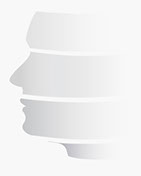Migraine Triggers
Stress (good or bad) is the most common trigger for adults as well as children. In fact, the migraine brain is prone to handle stress less effectively than non-migraine patients. Alleviate stress through non pharmacological means whenever possible through exercise, appropriate and consistent sleep times, enjoyable activities and rest and hobbies. The impact of a migraine can sometimes be lessened by learning biofeedback techniques although this requires guided instruction to do this well. Social support spread throughout family and friends certainly can help but for severe, disabling migraines the use of psychotherapist and medications may be necessary.
A full night’s sleep is very important for everyone, adults and children. However, for the migraine sufferer (especially children), effective sleep and consistent time schedules can sometimes be enough to dramatically reduce the severity and frequency of headaches. Poor and disrupted sleep is a common complaint in children with headaches. Children and young adults as well as many older migraineurs need at least 8 to 9 hours of sleep a night and adolescents may need even more. Electronic devices can lead to distractions during bed and sleep time. The bedroom room should be a place only to sleep. Television, computers, and phones should be off or removed from the bedroom. Sleep apnea (trouble breathing while sleeping) -- can be an unnoticed trigger for headache. If you snore, wake up frequently or are very tired during the day, regardless of amount of sleep at night, it’s important to raise these issues with your doctor and possibly obtain a sleep study. Sleep is like rebooting the migraine brain and can often make a persistent headache go away.
Never skip meals as it may lower blood sugar (hypoglycemia) and eat at least three meals per day (four smaller meals may be even better). It may also be a good idea to carry a snack for between meals. Alcohol (red wine and champagne are most common), certain foods or additives (artificial sweeteners) can be a trigger for some migraine headaches, but probably less often and/or as consistently as assumed. Other common reported food triggers are aged cheeses, luncheon meats, sausages or hot dogs containing nitrates, chocolate (tyramine), yogurt and MSG (monosodium glutamate) sometimes used in oriental foods. Many patients experience too many headaches per month to accurately identify food triggers and can often limit a favorite food or drink unnecessarily.
Hormonal changes can trigger migraines or increase their frequency and severity. Common times include the peri-menstrual cycle (usually 1-3 days before the start of menstruation), ovulation, puberty, pregnancy and most commonly menopause. Also, headache is a common side effect of birth control pill use or with any hormonal manipulation. However, hormonal treatment and BCPs may be helpful in some treatment regimens for very hormonally triggered migraines.
Many people report that changes in weather trigger a migraine, and much research has been conducted on the migraine-weather connection. Although the exact cause is not really well understood, big changes, temperature, pressure and humidity, are often reported by patients as the most consistent cause of a recent headache.
Concussions can certainly cause headaches that have many of the same characteristics of migraines. However, even minor bumps on the head can initiate or worsen migraine headaches.
Stress
Sleep
Food/Meals
Hormones
Weather
Head Trauma
